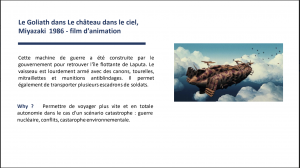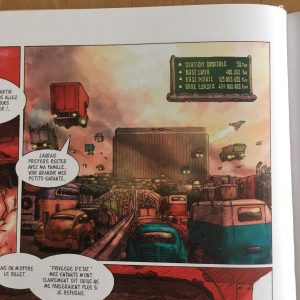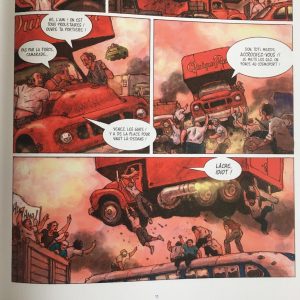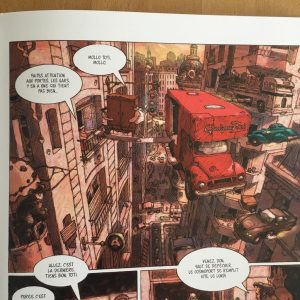Each time we go to a conference or do foresight with companies, there is someone, either in the audience, or as a speaker who is challenging the use of imaginaries as a tool that allows to discuss about tomorrow. And that person always gives us what he/she believes to be the ultimate challenge : « what about flying cars, this imaginary has been here forever. Isn’t it time that science fiction delivers something new, and that we find something else or just build them ? Isn’t this living proof that the imagination is nothing but speculation, nothing to do with reality? ».
Based on this argument, people believe they can kill the use of imaginaries or at least criticize the fact that they are a great source of innovations & ideas. From our point of view, this argument just bores us to death.
Flying mobility in general – including flying mats, flying animals, flying skateboarding, etc. – is in fact a very interesting category in our imaginaries. First of all because it does seem so obvious, it challenges us to go further. But second of all, because of its massive presence, it invites us to be careful about how to manage our imaginaries.
As a starter, please remember that the flying cars do exist in real life. In fact, the first prototype was probably built by Henry Ford in 1926, so it has been done quite a while ago. Discussing about the lack of vision from science fiction authors when they write about something that has been built 100 years ago seems weird to us. On the contrary, we should ask ourselves why it still holds such a powerful capacity to “show” the future. Second, it is a good reminder that you should (nearly) never take imaginaries literally. What flying cars really tell us is that we are all looking for a fluid and maybe individual mobility. Which is much more interesting, and this is obviously what we are looking for on this blog.
Based on that, we did a workshop wit the the students from Nicolas’ Master in Marketing, Design & Creation at Audencia Business School. The challenge was simple : can we find a « story », a lineage in our imaginaries of flying mobilities. Flying car being only a small part of these mobilities of course. So we asked four groups of students to come with a bunch of cards detailing either real-life or fake flying mobilities. For each card we have the name of the source, the year, the description of the scene and why it was selected. In total, around 80 cards were produced.

An example of an “imaginary card” produced by the students


Students working on a taxonomy with the cards
With this deck in hand, the students started looking for a taxonomy, and quickly found a few items that could help. Below, a few examples :
Man made versus nature mobility

The misappropriation of objects for flying : how we use things that are not supposed to fly.

Individual versus collective mobility

So there are numerous ways to categorize these mobilities. The examples below are « macro » ones. Once it is done, we can then go to a much more detailed analysis such as discussing the body position related to the object (for example, do we sit on it, do we stand, are we suspended ?), the type of equipment, the energy used etc. So we have a taxonomy that allows us to talk about the value of a certain dimension of mobility in order to ask ourselves: to what extent do I really need to build things this way ?. But it does not tell us more in terms of how these mobilities have evolved over time, or how people react to it. It is a third way of approaching these imaginaries: by connecting them to inventions and real uses. This will of course be the subject of another workshop.
Also, we wanted to finish on a a few extracts of a great comic called Planeta Extra. The book is in French, but it just numerous examples of how creative you can be if you take the flying car example seriously. The book tells the story of a bunch of movers who are having a hard time making a living. The authors have a great way of showing a mundane life with all the issues linked to flying cars : what happens when the heroes have to sell their flying engine, and go back “down on earth” with the “proletariat”, what happens when you have to move a furniture through a window (and not a door obviously) etc. A great way of showing the power of our imaginaries to speculate about anything


 !
!
Planeta Extra (2020) – Diego Agrimbau and Gabriel Ippoliti

